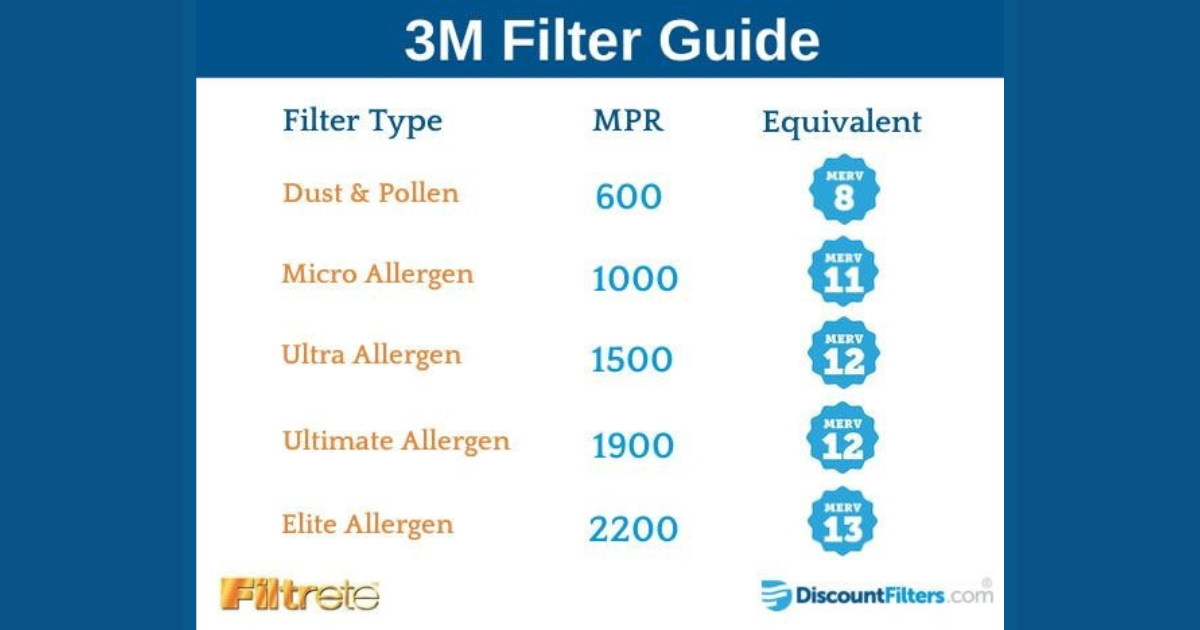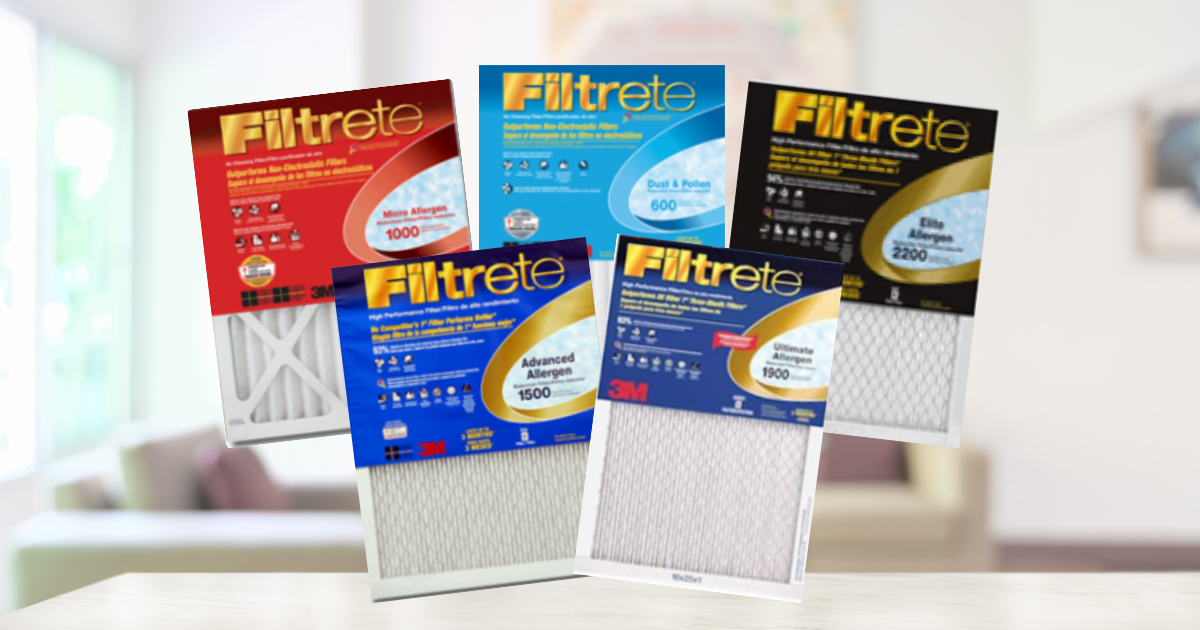3M is world-known for producing a variety of products related to electrical, cleaning, building materials, and other areas, including furnace filters. Like most filter producers, they provide multiple levels that fit different needs, but 3M opts to use its own rating system called Microparticle Performance Rating (MPR) instead of the industry standard MERV ratings. 3M makes great filters, but if you’re accustomed to MERV-rated filters, buying from 3M could cause some confusion. Let’s try to break it down for you.
MERV vs. MPR
Air filters rated on the MERV scale are evaluated based on their ability to capture medium to large particles that range from 1 to 10 microns, as well as their ability to capture submicron particles ranging from 0.3 to 1.0 micron. 3M filters focus strictly on the submicron particles, using a rating system called MPR, as mentioned above. Some of those submicron particles include things like bacteria, smoke, and smog. The ability to capture these particles, as well as others, is pretty significant.
Comparison Guide
So, let’s say you’re formerly a MERV filter person, and you’re switching to a 3M filter, or vice versa. Here’s a small guide of 3M’s filters and the way they relate to MERV:

Effectiveness
Just like MERV ratings, the MPR system works on a scale. Higher MPR ratings work better than lower ones, and the higher MPR rated air filters have a significant amount of media packed into their frames, as well as tighter pleats. They are built specifically to prevent anything other than clean air from passing through them, and they do a great job at it too.
With that said, the higher the MPR rating, the more expensive the filter will cost you. While these things are packed with media, they shouldn’t have a significantly different effect on your HVAC system compared to a similarly rated MERV filter. Airflow through furnace filters is rated based on pressure drop. The lower the pressure drop number, the better the airflow. All of 3M’s filters’ pressure drop numbers are in the “acceptable range.” While airflow won’t be overly restricted, your furnace will still be working hard to move air, so don’t be surprised if you see your electric bills increase, primarily if you’re used to MERV 1-4 or 5-9 filters.
3M also recommends that you change air filters every three months. To be fair, most filter manufacturers suggest the same, but the density of some of these filters, especially once they become packed with tons of submicron particles, can put a significant damper on your furnace and reduce its efficiency. At Discount Filters, we have a wide selection of different air filters, including AIRx Air Filters Shop air filters today!
Other Frequently Asked Questions
Why does my Filtrete filter turn black?
Not cleaning your furnace filter regularly can cause it to become clogged with dirt, resulting in the air filter turning black. This is more common for households that burn candles often or have a fireplace.
Will a Filtrete filer eliminate the need for dusting?
While a Filtrete filter helps eliminate some dust, it should never replace regular dusting. Atmospheric dust consists of a wide variety of particulates ranging in size from 0.001 micron to a relatively large 100 microns. Due to the weight of the large particles, they settle on your furniture long before even reaching your air filter. Therefore, regular dusting is still recommended.
What is the difference between fiberglass filters and Filtrete filters?
Filtrete filters were created to help protect your furnace equipment while also cleaning the air passing through them, whereas fiberglass filters were originally developed to protect your furnace and/or air conditioning system exclusively. Fiberglass filters were not intended to improve your indoor air quality and therefore will not capture allergy-aggravating microparticles like Filtrete filters can.
How often should I change my Filtrete filters?
For maximum effectiveness, it’s recommended to change your Filtrete filters at least every three months. However, the lifespan of a filter depends on the individual’s condition in their home. You may need to change your filter more often if your home has construction work in progress, furniture or drywall sanding in progress, pets, smokers, or a fan running continuously. In these cases, you may want to change the filter more frequently.

